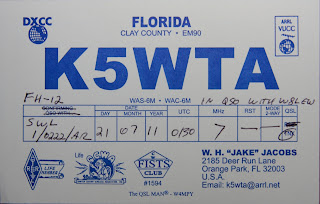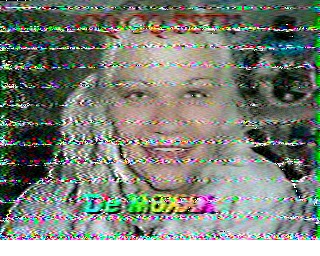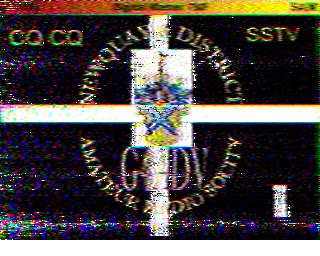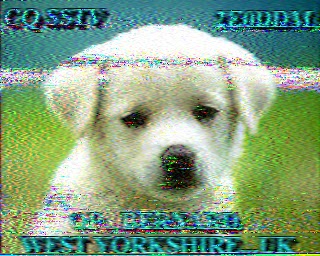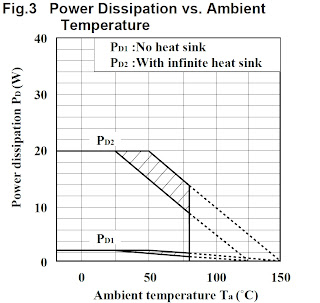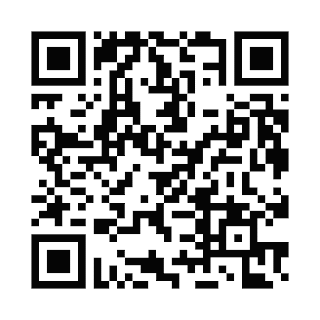Ricevuta la prima QSL della mia sessione di ascolto di questo affascinante modo, il Feld Hell!
Ringrazio K5WTA per la sua celere risposta! "K5WTA thanks for your swift response!"
Sotto riporto lo screenshot della ricezione FH. In questo QSO con W8LEW
lunedì 8 agosto 2011
venerdì 22 luglio 2011
Log Station SWL I/0222/AR "FELD HELL"
giovedì 21 luglio 2011
Finalmente! Ora ho anche la FELD HELL...
Il sacrificio di settimane di monitoraggio terminato stamani alle 4.00 ha dato i suoi frutti. Finalmente ho catturato la tanto ambita (per me) trasmissione in FELD HELL.
Quando stamani alle 3, ancora nel dormi-veglia ho acceso la radio è stata una sorpresa immensa veder comparire del monitor del PC le tanto agoniate lettere su due righe!
Sotto riporto le immagini di alcuni QSO tra radioamatori americani.
Quando stamani alle 3, ancora nel dormi-veglia ho acceso la radio è stata una sorpresa immensa veder comparire del monitor del PC le tanto agoniate lettere su due righe!
Sotto riporto le immagini di alcuni QSO tra radioamatori americani.
martedì 12 luglio 2011
Svelato il mistero...
Svelato il mistero della possibile Number Station.
In Realtà sembra essere una comunicazione di servizio dell'esercito americano.
Tale genere di comunicazione prende il nome di EAM o HF-GCS (non ho ben capito).
Sotto riporto un interessante articolo che spiega che cosa sono le EAM:
" ...EAM: Though generally referring to a category of urgent messages from commanders to deployed forces, EAM is often used as a short-hand expression for a specially coded nuclear attack directive."
In Realtà sembra essere una comunicazione di servizio dell'esercito americano.
Tale genere di comunicazione prende il nome di EAM o HF-GCS (non ho ben capito).
Sotto riporto un interessante articolo che spiega che cosa sono le EAM:
" ...EAM: Though generally referring to a category of urgent messages from commanders to deployed forces, EAM is often used as a short-hand expression for a specially coded nuclear attack directive."
From "Strategic Command, Control, and Communication - Alternative Approaches For Modernization"; John J Hare, Richard H. Davison, and Peter Tarpgaars; Congressional Budget Office (CBO); October 1981; Page 44:
"....Proper coding and formatting of EAMs is of crucial importance, since nuclear forces are prepared to execute any messages they receive that meet rigid specifications. In addition to specific instructions contained in an EAM, proper coding provides the means by which a commander expresses his authority to release nuclear weapons and an officer controlling those weapons verifies that authority."
Ibid, Page 12:
“[In the December 94 issue of Monitoring Times] we talked about the U.S. military's Emergency Action Messages (EAM) broadcast. Here is an interesting explanation, taken from a U.S. Air Force manual, of what an EAM is.
"Joint Chiefs of Staff Emergency Action Messages (EAMs) contain key instructions or information from high level authority and have predetermined formats (pro forma). Such messages are transmitted by various communications systems and normally carry FLASH precedence. They are vital messages of an extremely time-sensitive nature, and rapid processing is mandatory to obtain the fast reaction required by their content. Usage and handling procedures are of the highest classification and have been issued by the JCS only to those who have a need to know." (AFM-01-1-18, sub 3; amended 01 Jan 1990)."
From the May 1995 Monitoring Times; Utility World column by Larry Van Horn; page 33; section titled "What are EAMs?":
=========================
From a shortwave utility hobbyist's standpoint what are they? Park your HF receiver (set to upper side band mode) on 15016.0 kHz, 13200.0 kHz, 11175.0 kHz (the most productive for day to day monitoring of the U.S. military on HF), 8992.0 kHz (ideal for monitoring during North American nights), 6739.0 kHz , 6712.0 kHz or 4724.0 kHz.
Eventually you'll hear ground stations of the USAF's HF-GCS (led by ANDREWS or OFFUTT or MCCLELLAN, identified in the clear since 1992) broadcast one or more Emergency Action Message, or EAM. You will hear a six-character alpha-numeric string (known as the "preamble") read phonetically, repeated three times. This will be followed by the same 6-character string either by itself (as the entire message), or concatenated with additional alpha-numeric characters to produce alpha-numeric strings that total 28 characters (the most common length; 30-characters prior to 01 Oct 2000; 26-characters prior to 01 Oct 1998), or 22 characters (20 character prior to 01 Oct 2000), or strings with character-counts that can extend into the hundreds of characters (with the available character set universe consisting of all 26-characters of the English alphabet plus the numerals two, three, four, five, six and seven; with extremely rare exceptions there are no zeros, ones, eights or nines heard in these strings).
[Eventually you might discover that this HF EAM activity is also heard on a group of HF frequencies that are known as the ZULU frequencies utilized by communication assets (both airborne and ground based) of the JCS and U.S. Strategic Command (see the "Military Lists Area" column in any recent WUN newsletter for the known frequencies) and on HF frequencies utilized by the U.S. Navy during apparent exercises. However, since FY 2000 the ZULU frequencies have become much less active with daily connectivity communications to the point of silence.]
The above activity is heard daily, 7 days a week, 365 days a year, year after year.
A second group of coded messages heard on the GHFS (and the ones that produce the most comments from new listeners because of the "SKYKING do not answer" nature of the broadcasts) are the so-called FOXTROT broadcasts. These are heard only on the GHFS frequencies listed in the previous paragraph and take the form of the GHFS operator broadcasting a message that states "SKYKING, SKYKING. Do not answer. [3-element alpha-numeric group] [minutestamp] [time dependent two-character authenticator]" and repeated once.
These transmissions appear to be initiated by any of the GHFS ground stations except ASCENSION and HICKAM, with the initiating ground station prefacing the broadcast with a codeword that can consist of DECENT (or DESCENT), ENLIST, FAIRLY, EYESTRAIN (or sounds as), DEFROSTER, "ANY STATION" and maybe one more codeword recently reported. The codeword appears to determine which other GHFS ground stations are to "echo" the transmission. As an example, the DECENT transmission appears to apply only to CONUS stations while all the others appear to apply (with an occasional exception) to non-CONUS stations that fall outside an arc from Guam to Japan to Alaska to Greenland to the UK to the Azores.
These coded messages are said to be *only* for the positive control of ACC/AMC airborne forces detailed to the U.S. Strategic Command (USSTRATCOM). These messages appear to have higher priority on the GHFS voice circuits than do the EAM transmissions as an EAM transmission will be terminated in midstring in order to immediately transmit these "SKYKING" DNA broadcasts.
========
04 Apr 2005 Update:
The information in the above paragraph was written in 1998 and will remain unaltered in the interest of "history”; however, unlike the subtly changing information in the earlier EAM paragraph, there are some notable changes in the FOXTROT broadcasts since 1998.
- Prior to 1992 all FOXTROT broadcasts were initiated with aliased echo rotation callups similar to that described above.
- For a short time in the second half of 1992 (which represents the activation of the USSTRATCOM following the deactivation of SAC) the echo rotation callups were "in the clear."
- From maybe late in 1992 (or early 1993 lost in the fog of memory) the GHFS went back to aliased callup echo rotations as described in the above paragraph.
- In the 21 century the GHFS ceased to exist, replaced with the HF-GCS.
In the immediate post 11 September 2001 time period, during the run up to the purging of the Taliban from Afghanistan, the echo rotations appeared to go through a transformation. They were no longer aliased and at least two new stations were added to the echo rotation call up: DIEGO GARCIA and for a brief period CYPRUS FLIGHT WATCH. After this conflict ALL requests for echo rotation disappeared from the FOXTROT broadcasts, and it remains that way into CY 2005.
========
Further detailed information can be found from the following sources:
Hobby sources:
- Ary Boender's "Numbers & Oddities" column in the July 1995 (FOXTROT broadcasts) and August 1995 ("EAMs") WUN Newsletters (both newsletters are now "archived" at the WUN web site to save drive space - wunv1n7.zip and wunv1n8.zip) - a short overview of how these broadcasts 0manifest themselves on various HF frequencies.
- The December 1994 issue of Monitoring Times containing the "Utility World" column of Larry Van Horn, titled "US Air Force Global High Frequency (HF) System." A concise overview of the GHFS, and the traffic contained on the GHFS.
- The September 1995 issue of Monitoring Times containing the "Utility World" column of Larry Van Horn, titled "What's the meaning behind the messages." An overview of the "message" traffic heard on the GHFS and the NIGHTWATCH net.
- "The Aeronautical Communications Handbook - HF Edition" by Robert E. Evans; 1989 (and out of print, I believe); pages 7.11-7.13. Written while the Strategic Air Command was still in existence, so most of the information is out of date in it's details, but apparently not in it's overview of the EAMs.
"Academic" sources:
There are no known public sources for detailed descriptions of these strings, but there are a number of books and papers published that cover this topic in broad strokes (and, which I suspect are in many ways greatly out of date - I've found nothing that covers the post 1992 strategic world in a way that is as detailed as they cover the pre 1992 world. It may be too early to do so, as it is probably still in transition). Some examples follow:
- "The Logic of Accidental Nuclear War" by Bruce G. Blair; The Brookings Institution; 1993 (still in print); ISBN 0-8157-0983-8 (paper). There are numerous additional sources listed within the extensive "notes" section of this book. The notes section also contains detailed information that covers the uses of these messages.
- "Strategic Command and Control - Redefining the Nuclear Threat by Bruce G. Blair; The Brookings Institution; 1985 (still in print as of the middle of 1996); ISBN 0-8157-0982-X (hardbound). Much of this information covers what is now the foundation for today's strategic world, but I suspect that many of the specific details covered in the book are now greatly altered, maybe beyond recognition (such as the integration of the USN into much of the then SAC-centric activity in his book.)
- "Global Zero Alert for Nuclear Forces" by Bruce G. Blair; The Brookings Institution; 1995 (May or so, and still in print); ISBN 0-8157-0941-2. The only "book" (it's actually an "occasional paper" of 108 pages) in this group that can be said to be up-to-date in the post 1992 strategic world. On EAMs, in particular see pages 59-60.
- "Guarding the Guardians: Civilian Control of Nuclear Weapons in the United States" by Peter Douglas Feaver; Cornell University Press; 1992 (out of print unfortunately). Mostly covers PAL (Permissive Action Link) locks but has an overview on EAMs throughout the book.
- "Dark Sun - The Making of the Hydrogen Bomb" by Richard Rhodes; Simon and Schuster; 1995 (still in print); ISBN 0-684-80400-X. Page 573: "..SAC routinely transmitted DefCon increases as unclassified messages until 1972." Question: what happened after 1972? - "SAC routinely transmitted DefCon increases as classified messages"?
- The 10 May 1976 issue of "Aviation Week and Space Technology", devoted almost entirely to the Strategic Air Command. Written during the "Alpha Net" days of OFFUTT/BARKSDALE/WESTOVER/MARCH but has information that might still apply in some aspects 20 years later (probably modified.)
- The Winter 1996 (Volume 27) issue of "World Air Power Journal" devoted to the B-52H with a long article beginning on page 54 written by Robert F. Dorr and Brian C. Rogers. See page 89 for a description of the receipt and authentication of an emergency war order onboard an airborne B-52H.
Fiction
- "The Hunt for Red October" by Tom Clancy; Naval Institute Press; 1984 (still in print); ISBN 0-87021-285-0. Pages 65-66 (hardcover) for EAM information; and page 68 (hardcover) for "traffic analysis" fans.
- "Arc Light" by Eric L. Harry; Simon and Schuster (his editor was also Rhodes' editor on "Dark Sun"); 1994 (Aug); ISBN 0-671-88048-9. The author gets to engage the Midnight Express (see the "Logic..." book) and run his SIOP, in a probable pre-92 way though.."
Jeff Haverlah
Su youtube si trovano diverse registrazioni di HF-GCS EAM, come questa
Etichette:
EAM,
HF-GCS,
Number Station
domenica 10 luglio 2011
Possibile Number Station...
Mentre facevo zapping in shortwave mi sono imbattuto in questa che ha tutta l'aria di essere una Number Station
Una signorina parla in inglese usando l'alfabeto fonetico sui 9882-9883 AM/SSB.
La registazione l'ho fatta in AM ma credo che trasmettesse in SSB.
Ah dimenticavo...l'ho ascoltata intorno alle 21.40 UTC del 9/7/2011 ma era già iniziata...
Una signorina parla in inglese usando l'alfabeto fonetico sui 9882-9883 AM/SSB.
La registazione l'ho fatta in AM ma credo che trasmettesse in SSB.
Ah dimenticavo...l'ho ascoltata intorno alle 21.40 UTC del 9/7/2011 ma era già iniziata...
venerdì 8 luglio 2011
giovedì 7 luglio 2011
Log Station SWL I/0222/AR
Log Station SWL I/0222/AR
06/07/11 ,20.30 UT – 7365 - R.Vaticana – 44444
(Francese)
06/07/11 ,21.00 UT – 11630 - China Nationa Radio 1 – 44444
(Mandarino)
lunedì 20 giugno 2011
Finalmente il Nominativo SWL è arrivato....
domenica 19 giugno 2011
Aggiunta la pagina con il mio shack
Versione Blog per Smartphone
Per rendere la navigazione dai dispostivi mobili più snella.....
sabato 18 giugno 2011
Funzionamento dei Fax
in questo caso sono via telefono ma il principio è il medesimo degli HF-Fax
C.V.D.
Il nominativo SWL non é arrivato! Non credevo ci volessero più di 3 giorni per fare 40km di strada per una lettera! Che amarezza,sono proprio delle teste di cazzo!!!!!!!!!!!!
Le mail ti raggiungono ovunque con BlackBerry®
Le mail ti raggiungono ovunque con BlackBerry®
mercoledì 15 giugno 2011
Quarto colloquio Tel. con Ministero...
Per l'ennesima volta ho parlato con l'ufficio Radioamatori del ministero. Stavolta mi hanno detto che ieri hanno spedito tutti i nominativi. "Stia tranquillo, nel giro di due giorni le arriverà il nominativo" Speriamo, perché stavolta mi sono proprio scocciato di questo servizio pubblico!!!!
Le mail ti raggiungono ovunque con BlackBerry®
Le mail ti raggiungono ovunque con BlackBerry®
martedì 14 giugno 2011
Il Dramma di uno SWL..."Ministero questo inefficiente"
Vorrei raccontarvi il mio dramma. In data 25 Marzo '11 ho inviato Richiesta di Nominato SWL al ministero dell'interno. Oggi, a distanza di 56gg "LAVORATIVI", dopo "TRE" solleciti telefonici...non ho ancora ricevuto il nominativo SWL. Ad ogni telefonata ricevevo un'infinità di scuse, con la promessa di evadere la mia richiesta nel giro di qualche giorno. Perché ho sempre l'eterna sensazione di essere preso per il culo da un sistema pubblico che non è efficiente? La motivazione del ritardo nell'evadere la mia richiesta è questo: "...la dirigente del settore radioamatori è in malattia e ci resta difficile gestire le richieste... "Cavolo, per scrivere un numero su un registro e mandare la comunicazione all'utente non sono sufficienti 56gg "LAVORATIVI"?! Perché mi viene voglia di mandarli in culo per telefono? A lavorare in fabbrica vi manderei...altro che al ministero, voglio vedere se diventate efficienti!!!
Le mail ti raggiungono ovunque con BlackBerry®
Le mail ti raggiungono ovunque con BlackBerry®
sabato 28 maggio 2011
Nominativo....quasi irraggiungibile....
Sono passati 2 mesi e non ho ancora ricevuto il nominativo.
L'altra mattina ho passato 20min al telefono con il ministero...sono rimbalzato da un uff. all'altro...
Alla fine mi è stato detto che la responsaile è in malattia...e che fa tutto lei?!?! sono comunque riuscito a farmi promettere di evadere subito la mia richiesta (praticamente non ho fatto nulla)... Speriamo solo che arrivi presto...
L'altra mattina ho passato 20min al telefono con il ministero...sono rimbalzato da un uff. all'altro...
Alla fine mi è stato detto che la responsaile è in malattia...e che fa tutto lei?!?! sono comunque riuscito a farmi promettere di evadere subito la mia richiesta (praticamente non ho fatto nulla)... Speriamo solo che arrivi presto...
lunedì 23 maggio 2011
Number Stations.... Servizo di Voyager
Venerdì 23 maggio è andato in onda, nel progrmma Voyager, un servizio sulle Number Station.
Sotto i due video del servizio.
Sotto i due video del servizio.
martedì 12 aprile 2011
sabato 9 aprile 2011
Ancora niente nominativo... :-(
E' quasi trascorso un mese ed ancora non ho ricevuto il nominativo SWL...
Questa cosa mi infastidisce. Non posso neanche mandare il file alla dita che deve stampare le mie QSL....
Che balls!....
Le mail ti raggiungono ovunque con BlackBerry®
Questa cosa mi infastidisce. Non posso neanche mandare il file alla dita che deve stampare le mie QSL....
Che balls!....
Le mail ti raggiungono ovunque con BlackBerry®
martedì 5 aprile 2011
QSL da DH6AD (BPSK31)
Ricevuta QSL della mia prova di ricezione BPSK31 sui 3.580MHz in USB
Questo lo screenshot della mia prova di ricezione in BPSK31
Questo lo screenshot della mia prova di ricezione in BPSK31
giovedì 31 marzo 2011
QSL da 2E0PAF (SSTV)
Questa la SSTV che ho ricevuto in data 20/03/2011
Vedi il precedente post
e questa è la QSL ricevuta oggi.
2E0PAF (Phil) - Ricezione SSTV (14,230MHz in SSB)
Vedi il precedente post
e questa è la QSL ricevuta oggi.
2E0PAF (Phil) - Ricezione SSTV (14,230MHz in SSB)
mercoledì 30 marzo 2011
QSL da G0DFU (SSTV)
Questa la SSTV che ho ricevuto in data 13/03/2011
e questa la QSL di risposta....
G0DFU - Ricezione SSTV (14,230MHz in SSB)
e questa la QSL di risposta....
G0DFU - Ricezione SSTV (14,230MHz in SSB)
Amici, Incredibile....arara...
contro ogni pronostico ho ricevuto la QSL dall' NDB PIA di Piacenza
Ringrazio il 450° Gruppo Servizi Tecnico-Operativi
Ringrazio il 450° Gruppo Servizi Tecnico-Operativi
domenica 27 marzo 2011
SSTV da 2E0PAF (Phil)
Due settimane fa ho ricevuto una SSTV dall'inghilterra di un radioamatore (2E0PAF) e poco fa ho ricevuto tramite email una sua conferma del mio rapporto di ascolto.
"...Many thanks for your very detailed signal report with the picture of my transmission. It was very helpful as at the time I had only just set up my SSTV system
and made the interfaces between the Icom 706MKIIG, tuner in to an end fed wire aerial running 40watts. At the time I was in a park home in a place called Pagham
near Bognor on the south west coast about 3kl from the sea. Sorry for delay but have only just opened your kind letter. Will send on my QSL card in a week or so as
I will be returning to Pagham. One again thank you and good luck with your SWL hobby, regards to your family.
Phil 2E0PAF..."
Ho anche trovato una citazione nel suo profilo QRZ dove mi ringrazia per il mio rapporto di ricezione....ragazzi non sono briciole per me... :-)
Many thanks to Phil for his citation.
Attendo con ansia la sua QSL.
lunedì 21 marzo 2011
Inoltrata richiesta nominativo SWL...
Alla fine mi sono deciso! Ho richiesto il nominativo SWL...e ora comincia la luuuuunga attesa al ministero!speriamo non sia poi così tanto lunga!
Le mail ti raggiungono ovunque con BlackBerry®
Le mail ti raggiungono ovunque con BlackBerry®
sabato 19 marzo 2011
domenica 13 marzo 2011
NDB da Piacenza (S. Damiano) - 440kHz
Ricevuto con l'ausilio del programma ARGO, il segnale NDB di Piacenza sui 440kHz.
Sotto riporto lo screenshot del programma.
Per la ricezione ho usato il ricevitore R75 e l'antenna Wellbrok ALA1530+
Sotto riporto lo screenshot del programma.
Per la ricezione ho usato il ricevitore R75 e l'antenna Wellbrok ALA1530+
Etichette:
ALA1530+,
ARGO,
IC-R75,
NDB,
PIA 440khz
lunedì 28 febbraio 2011
Alimentatore Lineare x Icom R75
Mi è stato richiesto di illustrare la soluzione da me scelta per alimentare il Ricevitore R75.
beh,mi sono detto: "...e adesso che gli racconto?..."
Potrei iniziare così:....
il ricevitore in questione monta al suo interno un regolatore lineare
che produce alla sua uscita una tensione costante di 13,6V con un assorbimento max di 1.1A.
Cosultando il Datasheet del regolatore (PQ30RV31 della SHARP) vediamo che la max dropout in funzione di corrente e temperatura è di 0.15V che noi approssimiamo a 0,2V.
beh,mi sono detto: "...e adesso che gli racconto?..."
Potrei iniziare così:....
il ricevitore in questione monta al suo interno un regolatore lineare
che produce alla sua uscita una tensione costante di 13,6V con un assorbimento max di 1.1A.
Considerando che nel range termico di funzionamento, la temperatura ambiente può arrivare fino a 45-50°C facendo
decrescere la max potenza dissipabile a 1,3W (Vedi andamento grafico sottostante)
decrescere la max potenza dissipabile a 1,3W (Vedi andamento grafico sottostante)
e ricordando che la max corrente è di 1.1A
possiamo estrapolare la max tensione che può cadere ai capi del regolatore serie.Cosultando il Datasheet del regolatore (PQ30RV31 della SHARP) vediamo che la max dropout in funzione di corrente e temperatura è di 0.15V che noi approssimiamo a 0,2V.
Adesso abbiamo tutti i dati per decidere che tensione Pre-stabilizzata applicare alla radio,senza compromettere il corretto funzionamento dell'apparato.
Questa è la massima tensione che si può applicare.
Mentre la minima è data da ho scelto di alimentare il tutto a 13.8VDC....
Sotto lo schema del regolatore ext. E' bene ricordare che il regolatore LT1038 necessita di una buona dissipazione.
vi consiglio di usare almeno un dissipatore come questo.
vi consiglio di usare almeno un dissipatore come questo.
Sono qui per domande, chiarimenti o critiche!
Ciao
Ciao
sabato 26 febbraio 2011
Gruppo Radioascolto su Blackberry Messenger
Per chi possiede un Blackberry con BIS attivo e ha come me la passione per il Radioascolto...
Ho creato un gruppo sulla chat Blackberry, per accedere basta acquisire il QR code sotto con dall'applicazione BlackBerry Messenger.
Ho creato un gruppo sulla chat Blackberry, per accedere basta acquisire il QR code sotto con dall'applicazione BlackBerry Messenger.
giovedì 24 febbraio 2011
Icom R75 Service Manual
Ora che posso postare dal mio Blackberry...inizio subito con il segnalare il Service Manual per il nostro Ricevitore R75 della Icom.
Spero di aver fatto cosa gradita! A presto.
www.kb2ljj.com/Manuals/39-icom/IC-R75%20Service%20Manual.pdf
Le mail ti raggiungono ovunque con BlackBerry®
Spero di aver fatto cosa gradita! A presto.
www.kb2ljj.com/Manuals/39-icom/IC-R75%20Service%20Manual.pdf
Le mail ti raggiungono ovunque con BlackBerry®
[Test] Post via Blackberry [Test]
Questo post é solo una prova!
Verifica di posting via terminale BlackBerry
Le mail ti raggiungono ovunque con BlackBerry®
Verifica di posting via terminale BlackBerry
Le mail ti raggiungono ovunque con BlackBerry®
Iscriviti a:
Post (Atom)
